One of the Myrmecocystus mexicanus larva is finally pupating. It is crazy how long this is taking.
- Formiculture.com
- Forums
- Gallery
- Members
- Member Map
- Chat

One of the Myrmecocystus mexicanus larva is finally pupating. It is crazy how long this is taking.
You're lucky. Mine ate all her pupae.
She let her second largest larva wither up. ![]()
Update: 10/3/2014
I am removing the Myrmecocystus navajo queen from this journal, due to suspected infertility. The next update on her, will be here, but it will be when she either dies or I see larvae.
As for the Myrmecocystus mexicanus, like I said before, she has a pupating larva, and she let her second larva dry out and die.
Here are some pictures! ![]()
Notice the picture quality is worse than my other up-to-date images, that is because I have not yet moved her into a glass test tube, from her old plastic test tube. I am way to nervous of terrifying her, so she will wait it out in here until the first worker.

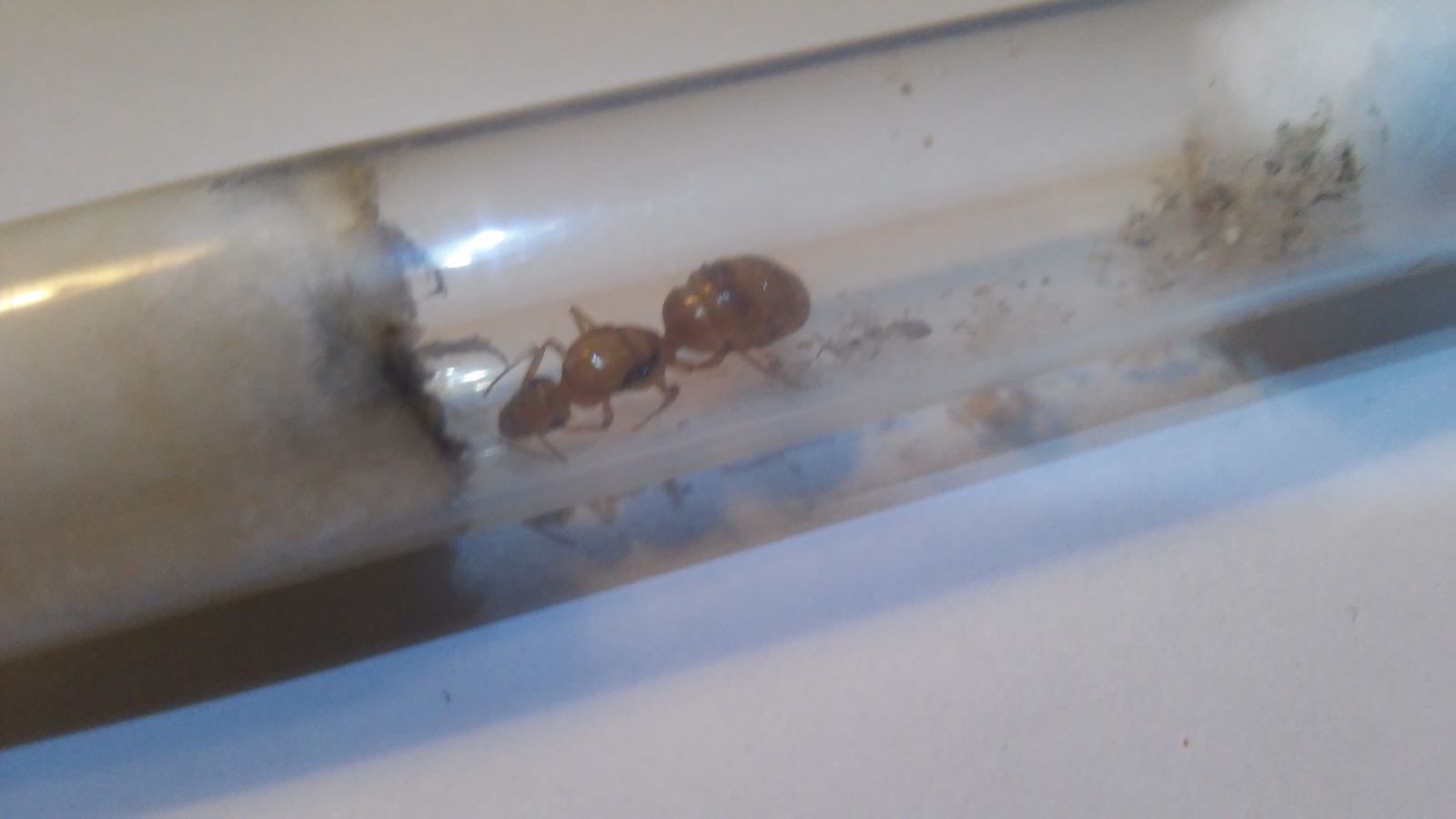

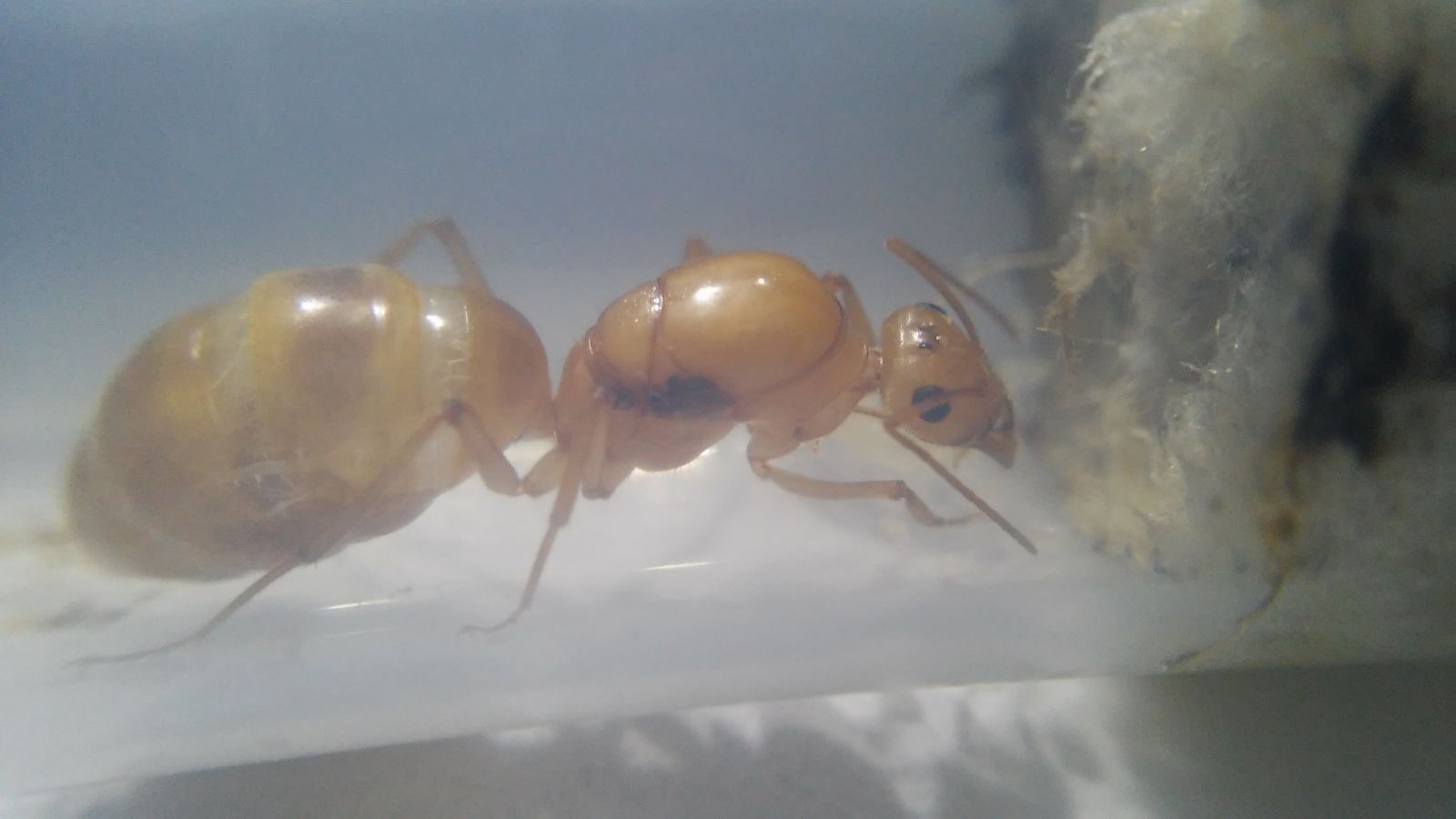
Update: 10/28/2014
I seem to have forgotten to update this. Well, as you can see in the video above, the larva dies right after the move. The queen effectively bit its head off. This was just stress cannibalism, but after that, she was to the point of starvation. ![]() She has no more reserves to live off of anymore. I refused to give up, and it seems, she will not give up either. Recently, she has been living the life of a semi-clausteral queen. I have been feeding her sugar and protein regularly, and FINALLY, a few days ago, I noticed she had laid a few eggs!
She has no more reserves to live off of anymore. I refused to give up, and it seems, she will not give up either. Recently, she has been living the life of a semi-clausteral queen. I have been feeding her sugar and protein regularly, and FINALLY, a few days ago, I noticed she had laid a few eggs! ![]() By today, she has a pretty decent sized clutch of eggs, and is not scattering them. She is in complete darkness almost 24/7 other than feeding time, and loves it. I have one of my paper test tube jacket "prototypes" slipped over the test tube like a glove, and it is keeping her nice and comfortable.
By today, she has a pretty decent sized clutch of eggs, and is not scattering them. She is in complete darkness almost 24/7 other than feeding time, and loves it. I have one of my paper test tube jacket "prototypes" slipped over the test tube like a glove, and it is keeping her nice and comfortable. ![]()
Update: 10/28/2014
I seem to have forgotten to update this. Well, as you can see in the video above, the larva dies right after the move. The queen effectively bit its head off. This was just stress cannibalism, but after that, she was to the point of starvation.
She has no more reserves to live off of anymore. I refused to give up, and it seems, she will not give up either. Recently, she has been living the life of a semi-clausteral queen. I have been feeding her sugar and protein regularly, and FINALLY, a few days ago, I noticed she had laid a few eggs!
By today, she has a pretty decent sized clutch of eggs, and is not scattering them. She is in complete darkness almost 24/7 other than feeding time, and loves it. I have one of my paper test tube jacket "prototypes" slipped over the test tube like a glove, and it is keeping her nice and comfortable.
I would like some of those. ![]() Is there anywhere I can get/make on? (The jacket)
Is there anywhere I can get/make on? (The jacket)
Well, I am no longer classifying the infertile one as a Myrmecocystus navajo, as I received an infertile M.navajo queen from Drew, and that is way smaller. She is probably just a striped Myrmecocystus mexicanus too. As for the fertile one, she has yet another pile of eggs, as she keeps eating hers.
I just wanted to share pictures of the infertile one, look how large her gaster is! ![]()
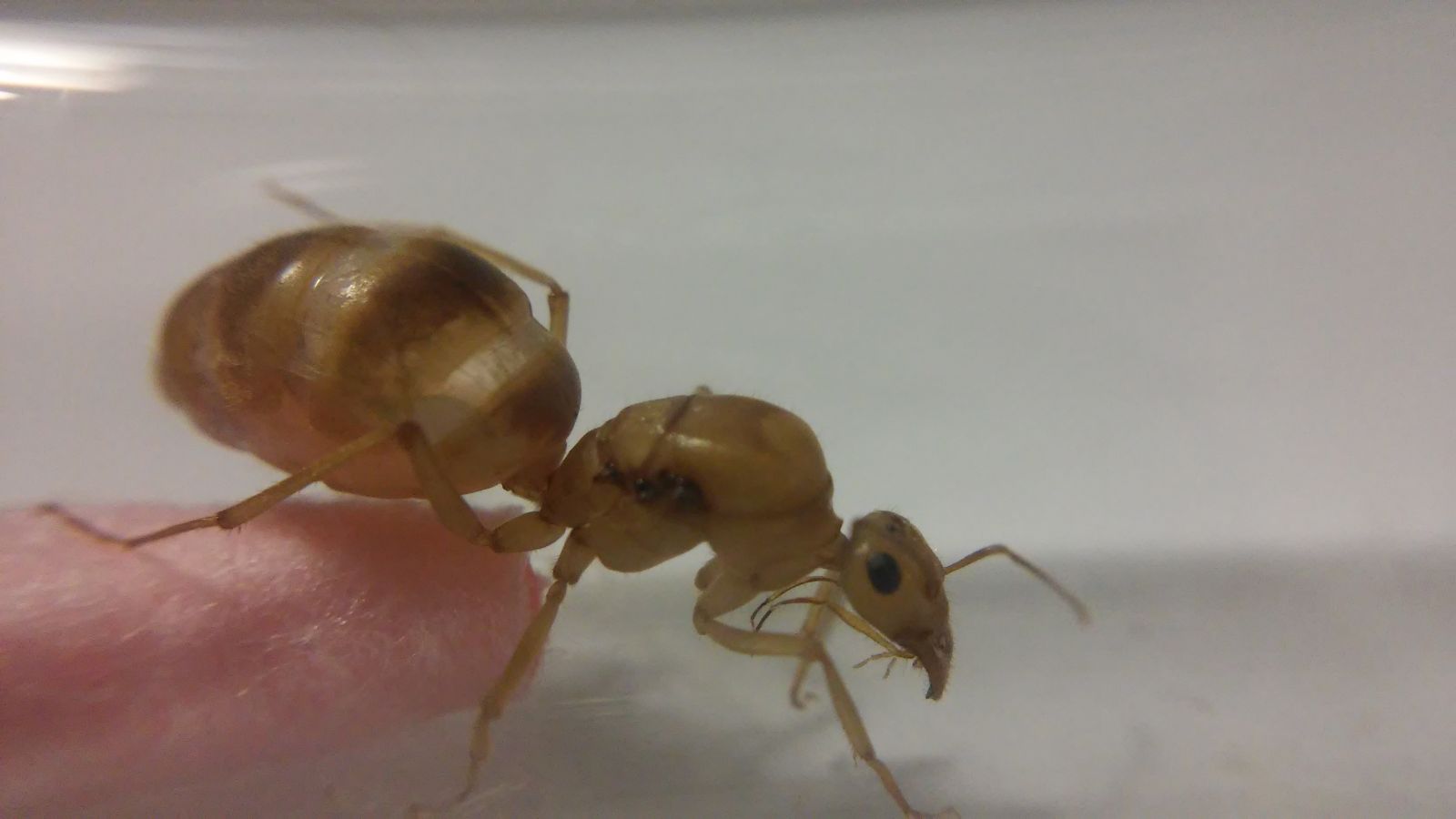
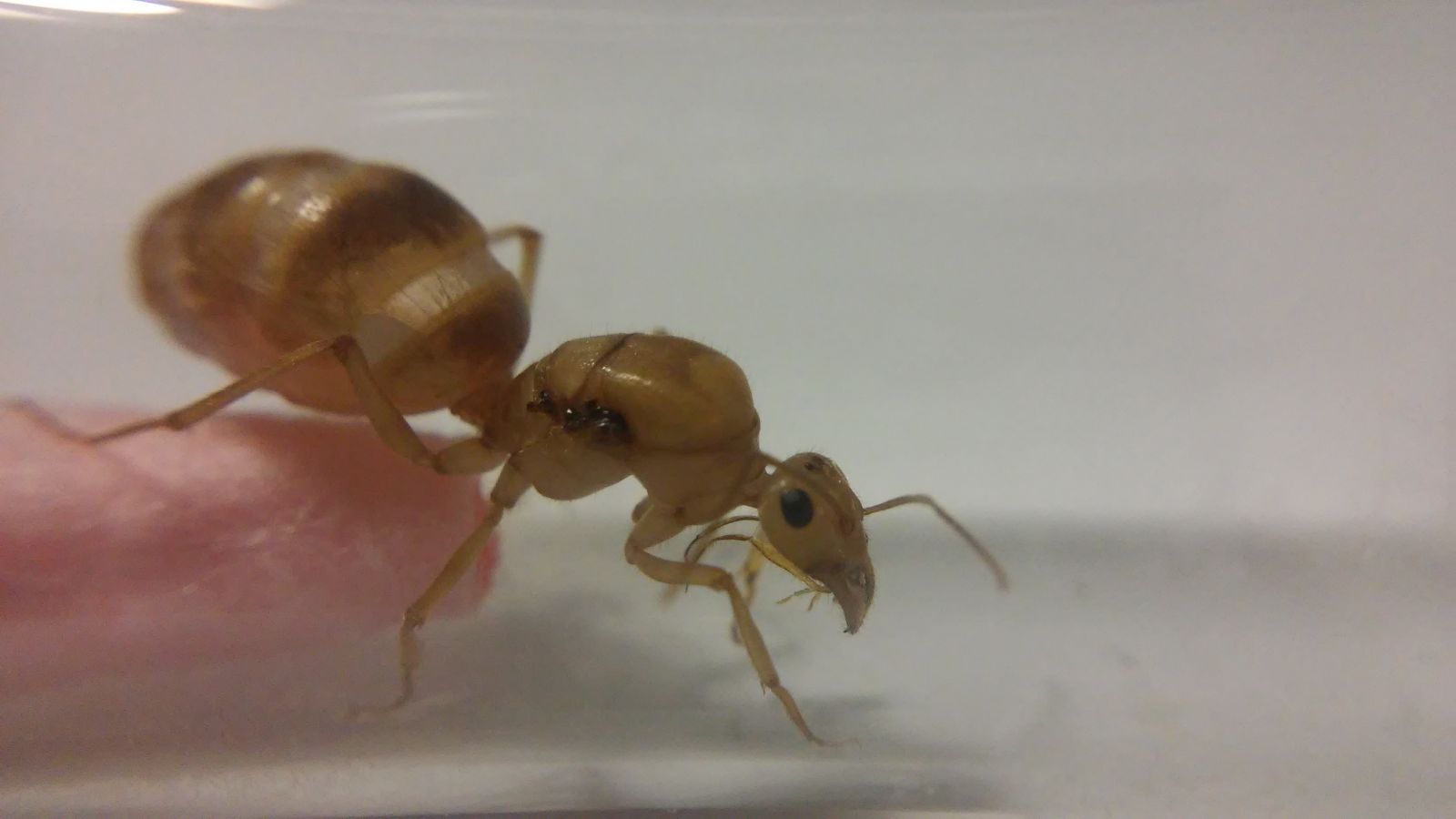
You're not clear on exactly which queens you are referring to. Which one are you calling a striped Myrmecocystus mexicanus?
Update: 11/24/2014
I found new larvae with the seemingly fertile queen! ![]()
There are four little squirming larvae, and their mother seems to be caring for them. ![]()

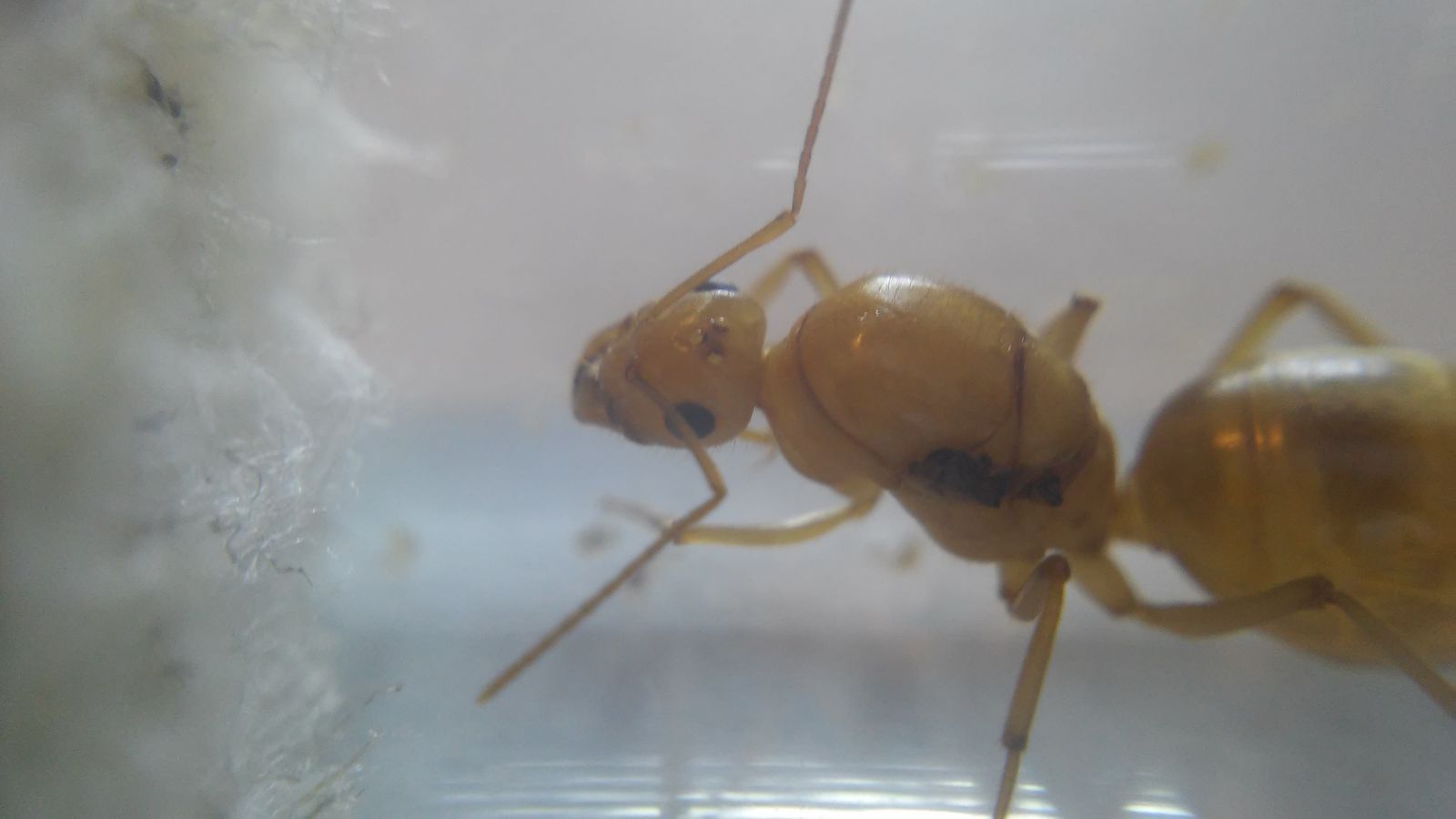
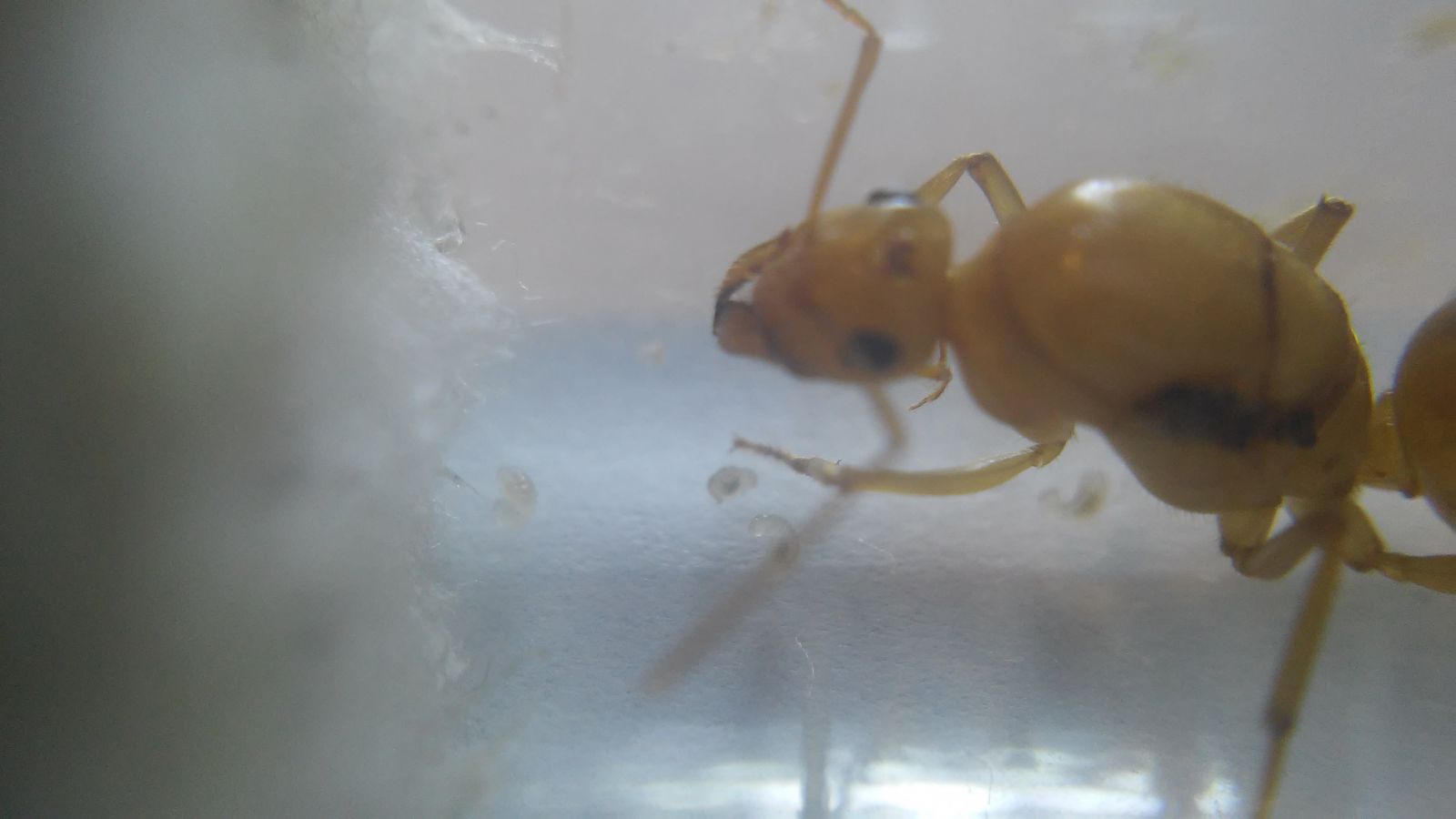
Two larvae down, two more still alive... ![]()
Both of these queens are still alive hahaha. I want something out of them, so I may change their setup up soon to a more Myrmecocystus friendly one.
Discontinued
Both of these queens died a week apart from each other. I can still get Myrmecocystus mexicanus again this year, so oh well.
Update: 7/28/2015
Well, I found six queens- both striped and all yellow color variations out in the desert on my latest trip, so I can recontinue this! ![]()
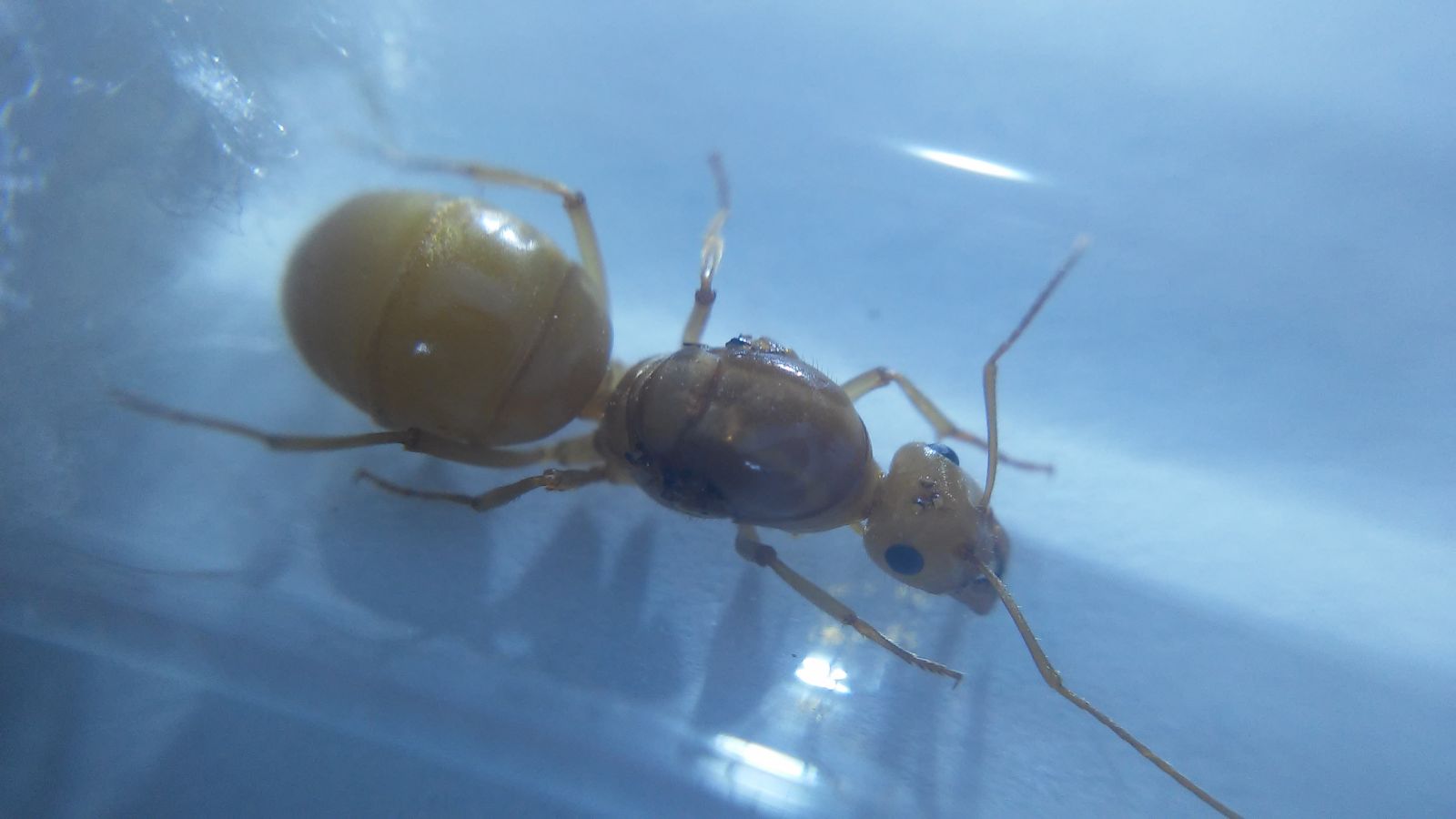
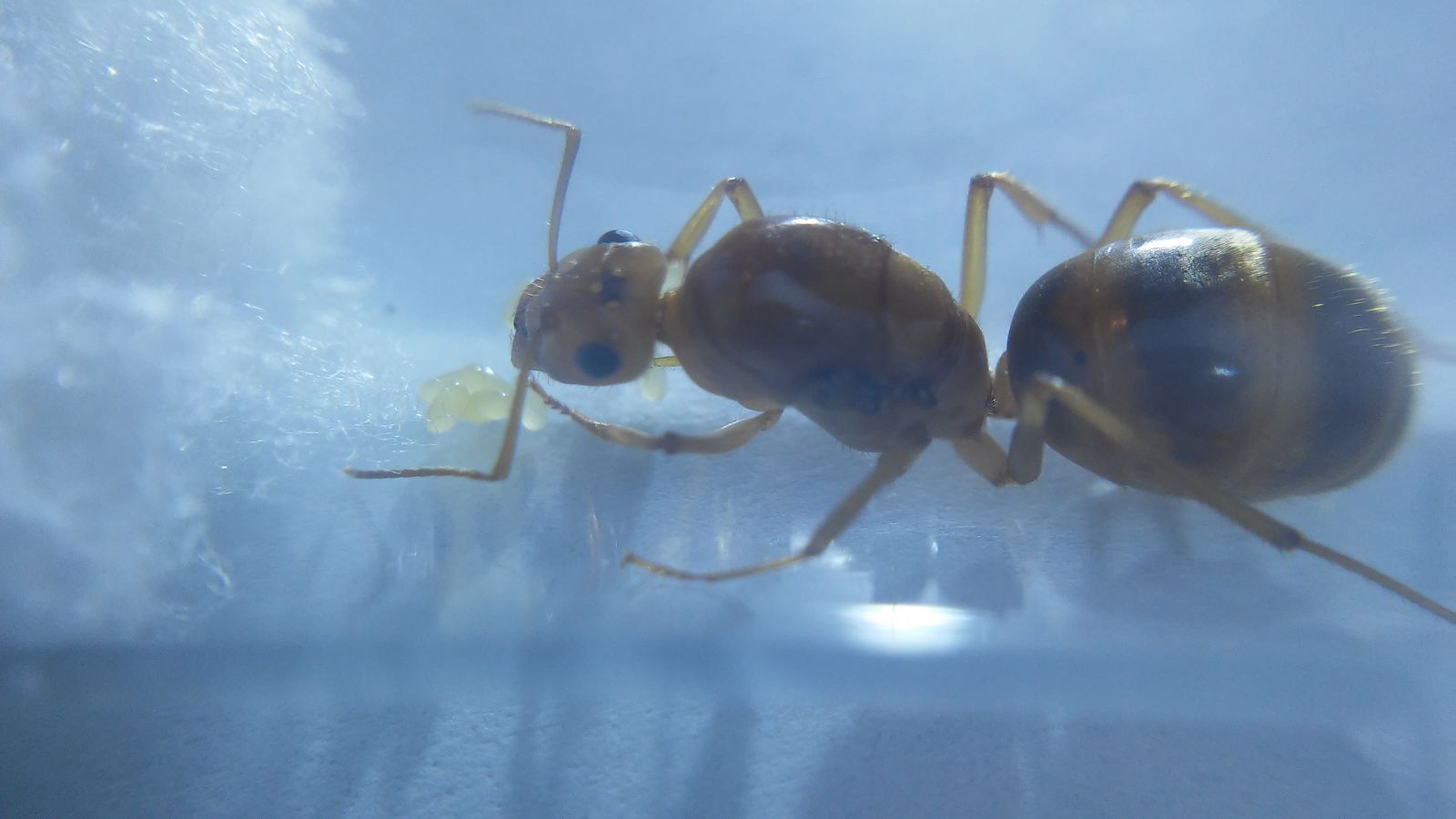
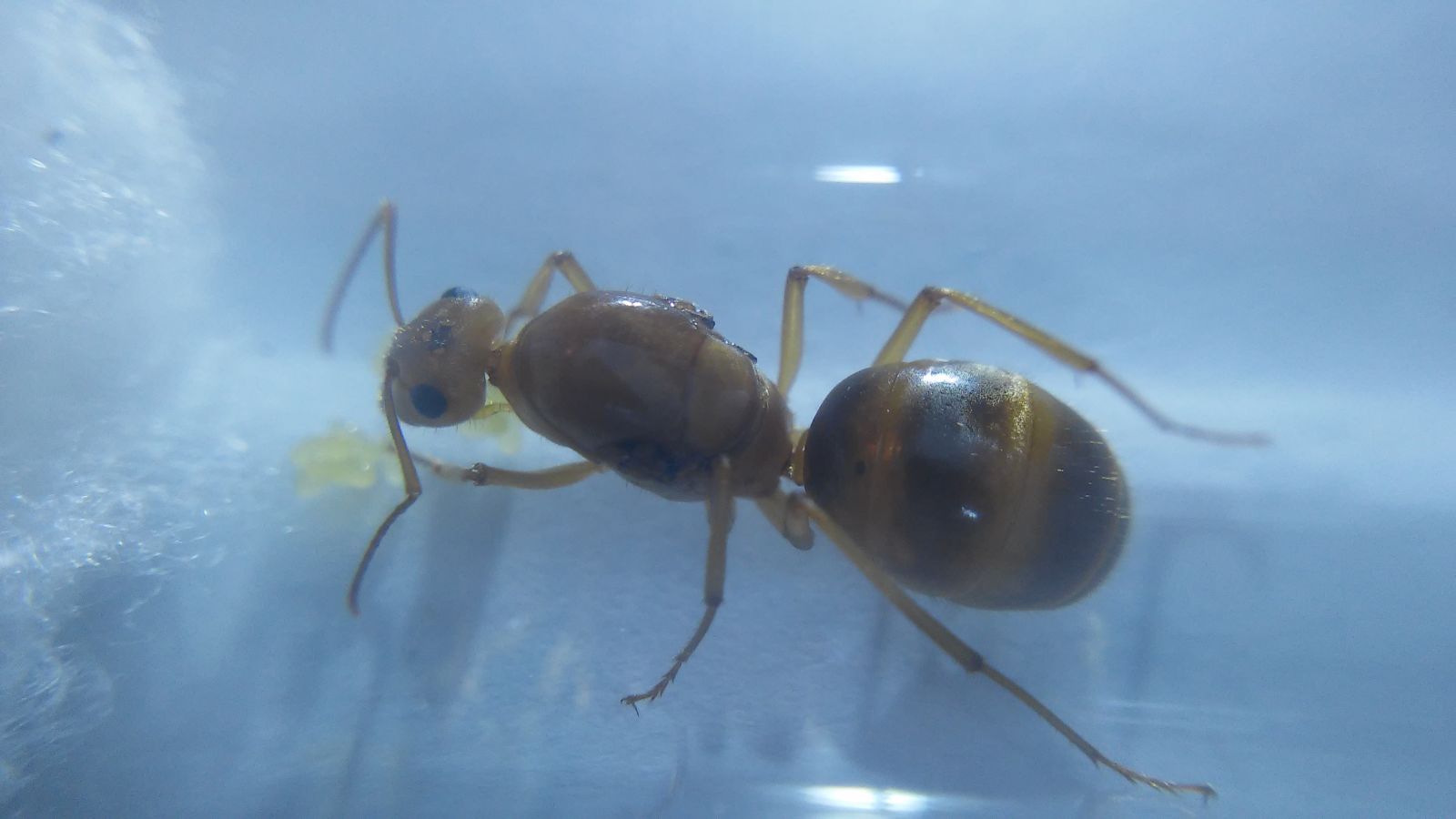
All of these new queens also have anywhere from 20-30 eggs each currently. They were all given sand in their test tubes for added comfort. ![]()
Update: 8/11/2015
Well all six of these queens have piles of larvae now, so it looks like the sand helps them a lot. ![]()
Here is a video of one of the queens.
Update: 8/16/2015
Five of the new queens have multiple pupae now! ![]() These sandy setups seem to work. The sixth one seems to be infertile, as her eggs never even developed into the white color, instead just always staying yellow.. (It seems most Myrmecocystus eggs are laid yellow, then turn white, and then turn into larvae.)
These sandy setups seem to work. The sixth one seems to be infertile, as her eggs never even developed into the white color, instead just always staying yellow.. (It seems most Myrmecocystus eggs are laid yellow, then turn white, and then turn into larvae.)
Update: 8/19/2015
Well first off, the "infertile" queen actually got some larvae yesterday. Looks like she is just slow. As for the other five, most of them are looking like this. ![]()
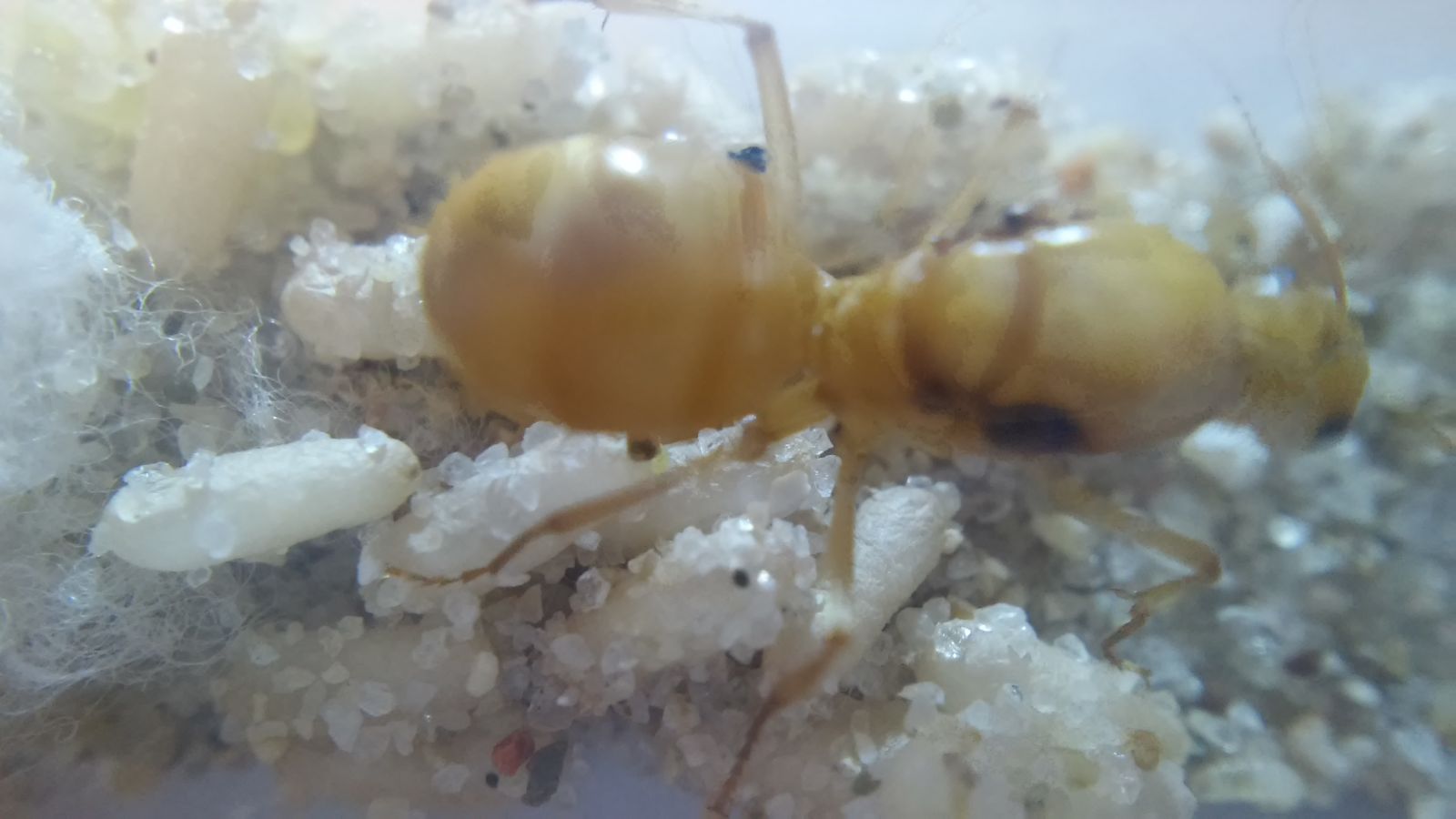
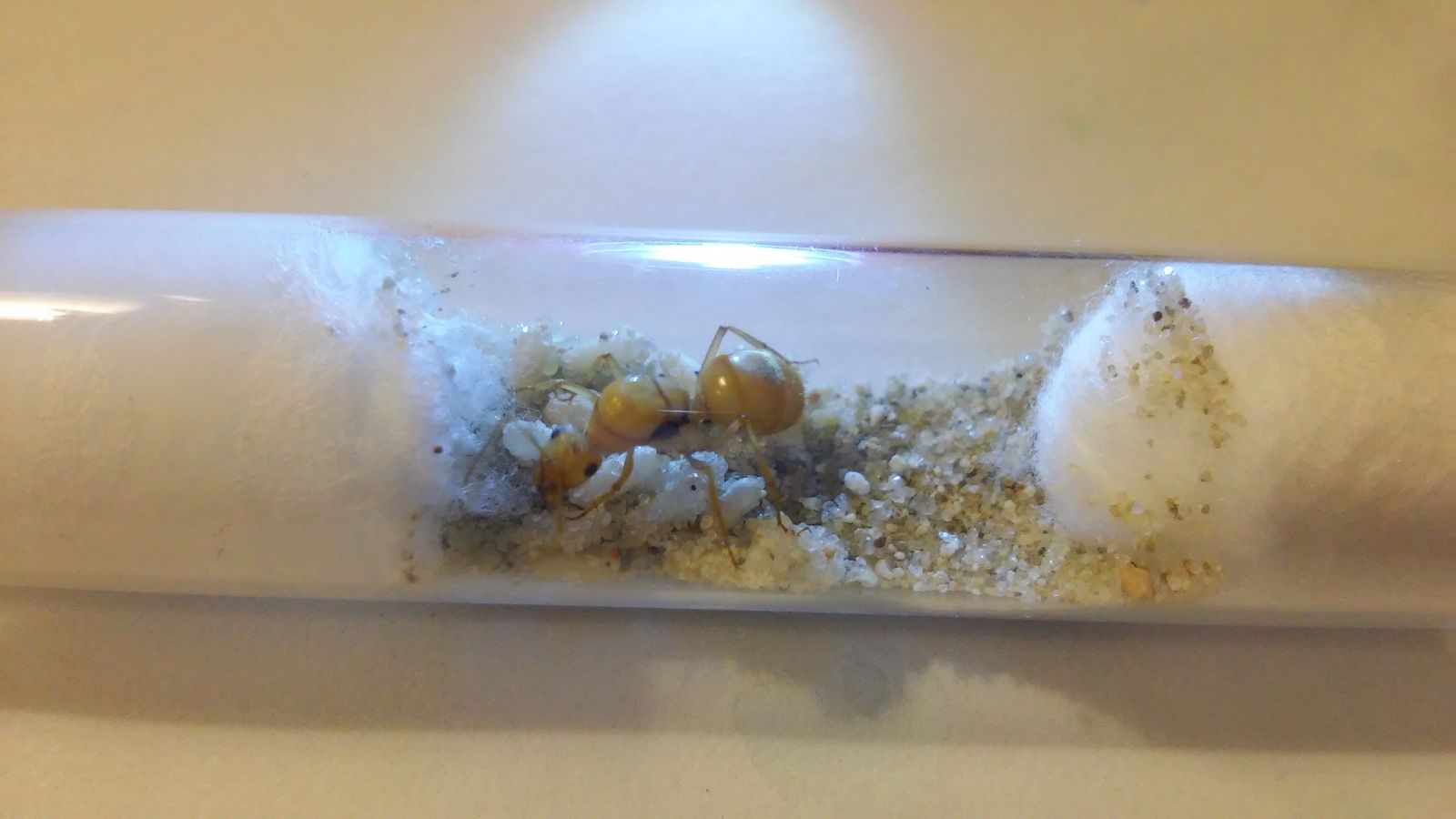

Market Place →
General Market Place →
Georgia Honeypot AntsStarted by Ant_Rider , Oct 23 2025 |
|

|
||
Ant Keeping →
Ant Keeping Journals →
cooIboyJ's Nylanderia vividula journalStarted by cooIboyJ , Sep 6 2025 |
|

|
||
Market Place →
General Market Place →
HUGE Myrmecocystus mexicanus colony for saleStarted by benxixi , Jul 16 2025 |
|
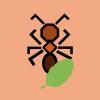
|
||
Ant Keeping →
Ant Keeping Journals →
Ants_Dakota's Camponotus sp. JournalStarted by Ants_Dakota , Jul 13 2025 |
|

|
||
Ant Keeping →
Ant Keeping Journals →
Strickys Formica JournalStarted by stricky_ants , Jun 21 2025 |
|
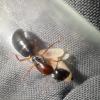
|
0 members, 1 guests, 0 anonymous users